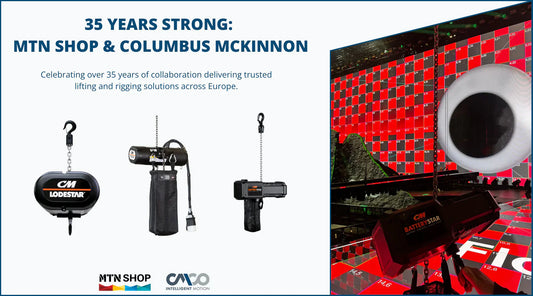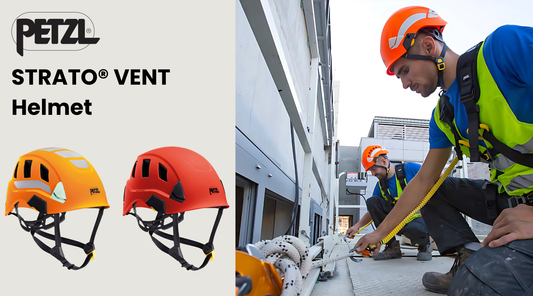Safety Harness & Lanyards: Guide & Inspection
Article
Safety Harness & Lanyard Guide: Fall Arrest, Restraint, Positioning & Inspection
Understand OSHA height triggers, active vs. passive protection, harness & lanyard types, connectors, descent & rescue, plus detailed pre-use and periodic inspections with checklists.
Harnesses and lanyards are core fall protection PPE for anyone working at height. This guide walks through key concepts and practical choices so you can spec the right kit for your job.
- When do you need a harness?
- Fall arrest vs restraint vs positioning
- Harness & lanyard types
- Inspection checklists
- Common FAQs
When Do You Need to Wear a Safety Harness?
OSHA height triggers:
| Context | Height Trigger |
|---|---|
| General Industry | 4 ft / 1.22 m |
| Construction | 6 ft / 1.83 m |
| Scaffolds | 10 ft+ above lower level |
| Steel Erection | 15 ft+ above lower level |
Always follow your local regulations and the site’s safety plan if they are more stringent.

Types of Fall Protection
Passive Systems (Preferred)
Stationary barriers that protect without worker interaction.
- Guardrails, barricades
- Safety nets & netting systems
- Engineered edge protection
Active Systems (Use PPE)
Require tie-off and worker participation.
- Fall Arrest: full-body harness + shock absorbing lanyard/SRL + anchor (distributes arrest forces; example limits: ~8 kN ANSI / ~6 kN EN).
- Fall Restraint: lanyard prevents reaching the edge (preferred over arrest when feasible).
- Positioning: side D-rings + positioning lanyard to work hands-free; backup fall arrest required.
- Retrieval: raising/lowering for confined space entry/egress.
- Suspension/Controlled Descent: supported work in suspension (e.g., window cleaning) with a separate fall arrest system.
| Passive | Active (Restraint) | Active (Arrest) | |
|---|---|---|---|
| Examples | Barricades, Netting | Tie-off limits reach | Harness + energy absorber |
| How It Works | Creates a barrier | Prevents access to edge | Stops a fall in progress |
| PPE Needed? | No | Yes | Yes |
| System Nature | Static | Movable | Movable |
| Training Level | Low | High | High |
| Potential Injury | Lowest | Low–Medium | Highest |
| OSHA Preference | Preferred | Better than arrest | — |
The ABCs of Fall Protection
A — Anchorage
A secure connection point capable of supporting intended loads with factor of safety. Can be structural (I-beam, concrete) or an engineered connector.
B — Body Support
A full-body harness distributes forces to thighs, pelvis, chest, and shoulders via D-rings.
C — Connectors
Devices connecting harness to anchor: lanyards, SRLs, hooks, and carabiners/connectors.
Body Harness Types
- 1-Point Harness: dorsal D-ring only; basic fall arrest.
- 2-Point Harness: dorsal + sternal D-rings; ladder systems often use sternal connection (dorsal is typical primary).
- 3-Point Harness: dorsal + two side D-rings for positioning. Backup fall arrest required.
- 4/5-Point Harness: dorsal + sternal + side D-rings and sometimes abdominal D-ring for rescue/suspension.
Connectors & Lanyards
Connectors link the harness (B) to the anchorage (A). Choose the right device for your method:
Fall Restraint Lanyard
Prevents reaching the edge. One end to anchor, the other to harness D-ring. Preferred when feasible.
Fall Arrest Lanyard / SRL
Includes energy absorber to limit forces. Tip: twin-tail designs let you stay tied-off while transitioning anchors.
Work Positioning Lanyard
Connects side D-rings to anchor to hold you in place for hands-free tasks. Always use a separate fall arrest system.
Descent & Rescue
Always have a written rescue plan before starting work. Rope access and confined space tasks may require haul systems for raises, descent devices for lowers, and suspension trauma relief solutions. Adding trauma straps to your harness can relieve pressure while awaiting rescue.
Safety Harness & Lanyard Inspection
How Often?
- Pre-Use Checks: every time, by the user.
- Detailed Inspections: every ≤6 months; ≤3 months in arduous use (demolition, steel erection, scaffolding, sharp-edge work).
- Interim Inspections: as your risk assessment dictates (for deterioration risks between detailed intervals).
Who Inspects?
Pre-use: the user. Detailed/interim: a competent, sufficiently independent person with authority to act (can be internal if competent and impartial).
1) Webbing
Bend 15–20 cm into an inverted “U” and scan inside/outside for tears, cuts, chemical damage, mould, burns, or broken stitching. Remove from service if found.

2) Stitching
Check for missing, torn, loose, pulled, or stretched stitches. If the stitch pattern is compromised, remove from service.

3) Hardware
Hooks/carabiners/buckles must open smoothly and auto-close/lock fully. Also check for chips, corrosion, cracks, dents, sharp edges, or heat damage.

4) Labels
If labels are missing or illegible, the equipment is unusable. Remove from service.
5) Energy Absorber
Check pouch for tears/burns; stitching where attached; and deployment indicators. If deployed or damaged, remove from service.

6) Cable · 7) Rope
Cable: look for broken wires, separation, corrosion, discoloration. Rope: tears, burns, mould, abrasion, unsplicing, discoloration. Remove if compromised.


 MTN TIP
MTN TIP
Choose restraint whenever practical to prevent reaching the edge. If you must use arrest, calculate total fall clearance (free fall + deceleration + harness stretch + D-ring shift + safety factor) and verify anchor capacity. Document inspections and retire questionable gear immediately.
Frequently Asked Questions
1) What does a safety harness with a lanyard do?
2) How long can a person be suspended in a harness?
3) What is suspension trauma?
4) What is the purpose of a suspension relief strap?
5) What is the capacity of a safety harness?
6) How many years is PPE good for?
7) How do you wear a safety harness?






